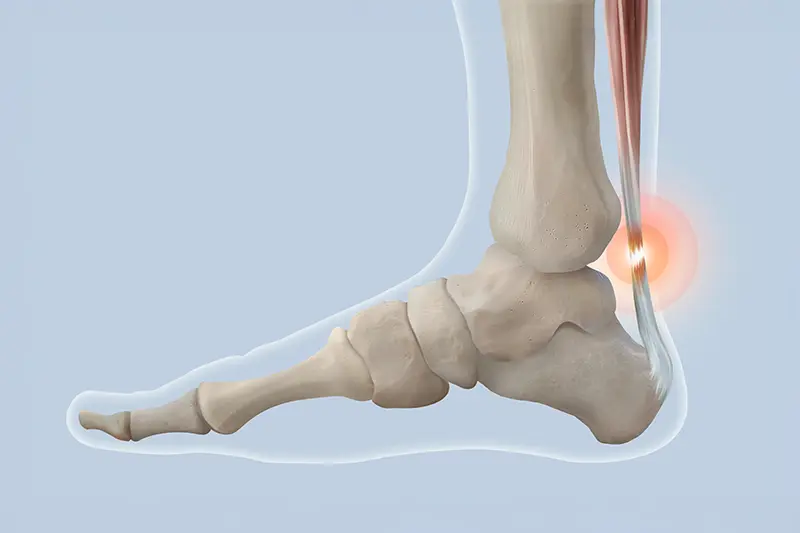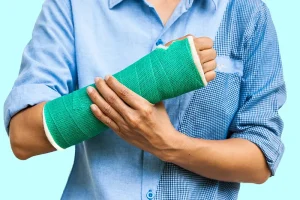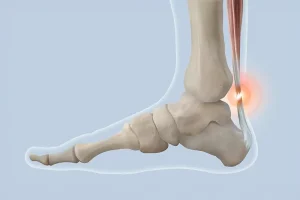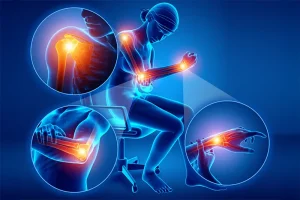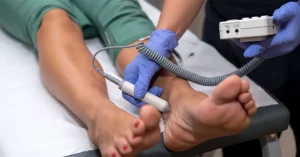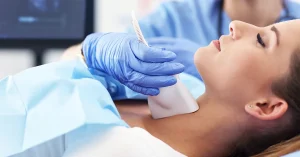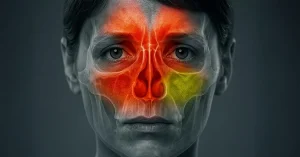What Is the Achilles Tendon and Why Is It Important?
Achilles tendon rupture is an extremely common condition among young men who play sports such as football or tennis. This tendon connects the gastrocnemius and soleus muscle complex to the calcaneus bone (heel).
It plays a vital role in bipedal posture, walking, and plantar flexion of the foot. While the Achilles tendon can be affected by multiple conditions, none is more debilitating than a complete rupture.
Types of Achilles Tendon Ruptures
Achilles tendon ruptures are classified into two main categories, based on the underlying cause:
1. Traumatic Ruptures – The Most Common
These occur after repeated forced stretching of the tendon, typically in sports that overuse plantar flexion—such as soccer, tennis, or mountain running. When practiced without proper warm-up or in unfavorable conditions, these activities can progressively weaken the tendon’s internal structure until it ruptures.
Most patients describe the rupture as feeling like a sudden, painful blow to the ankle from behind, often followed by a fall. Foot flexion becomes difficult or impossible, walking is severely impaired, and there is continuous pain, especially upon touching the back of the ankle. Clinically, the physician can usually identify a gap or “dimple” along the tendon.
Although imaging is not always necessary due to the specific symptoms, many physicians still recommend ultrasound or MRI to confirm the diagnosis. In some cases, partial ruptures may occur, which might influence the treatment plan. However, even in these cases, the remaining intact portion is often too weak to support proper healing without surgical intervention.
2. Atraumatic Ruptures – Caused by Pathological Factors
In tendons affected by disease (such as tumors), ruptures can occur spontaneously, even without excessive stretching. A tumor in this area is usually easy to identify due to its location just beneath the skin. Patients often notice a visible “swelling” when putting on or removing shoes and may seek orthopedic care before the rupture happens.
Certain medications, such as fluoroquinolone antibiotics (e.g., ciprofloxacin), are also known to increase the risk of spontaneous Achilles tendon rupture.
Treatment of Achilles Tendon Ruptures
Achilles tendon ruptures are generally treated surgically.
Although conservative treatment with immobilization in a cast or brace (with a heel lift) is an option—keeping the tendon ends in contact to promote healing—the resulting scar is often weaker in strength and tissue quality compared to that achieved through surgical repair.
Moreover, prolonged immobilization can be uncomfortable, especially with the required elevated heel position, which creates leg length discrepancy.
Since traumatic tendon ruptures primarily affect young, active men, a prompt and reliable return to physical activity is a priority. In such cases, surgical repair is often the most effective solution.
Surgical Treatment Methods
There are two main surgical approaches for Achilles tendon repair:
1. Classic/Open Approach
This technique requires a long incision (10–15 cm) to expose the entire tendon. A strong internal suture is placed through the tendon, followed by skin closure. After the procedure, the leg is immobilized in a cast.
2. Minimally Invasive Approach
This method involves inserting sutures through small skin incisions and guiding them to a common point for closure. The surgeon may use anatomical landmarks or specialized devices that assist with suture placement and improve precision.
Both the open and percutaneous techniques are generally effective in restoring tendon strength and function.
Advantages of the Minimally Invasive Technique
The primary advantage of the minimally invasive approach is the reduced formation of scar tissue around the repaired tendon. This leads to a faster recovery and greater patient comfort. Additionally, it minimizes complications often associated with large incisions—such as bleeding, infection, or unsightly scarring.
However, depending on the exact rupture location, your surgeon will determine whether an open or percutaneous technique is best suited for your case.

